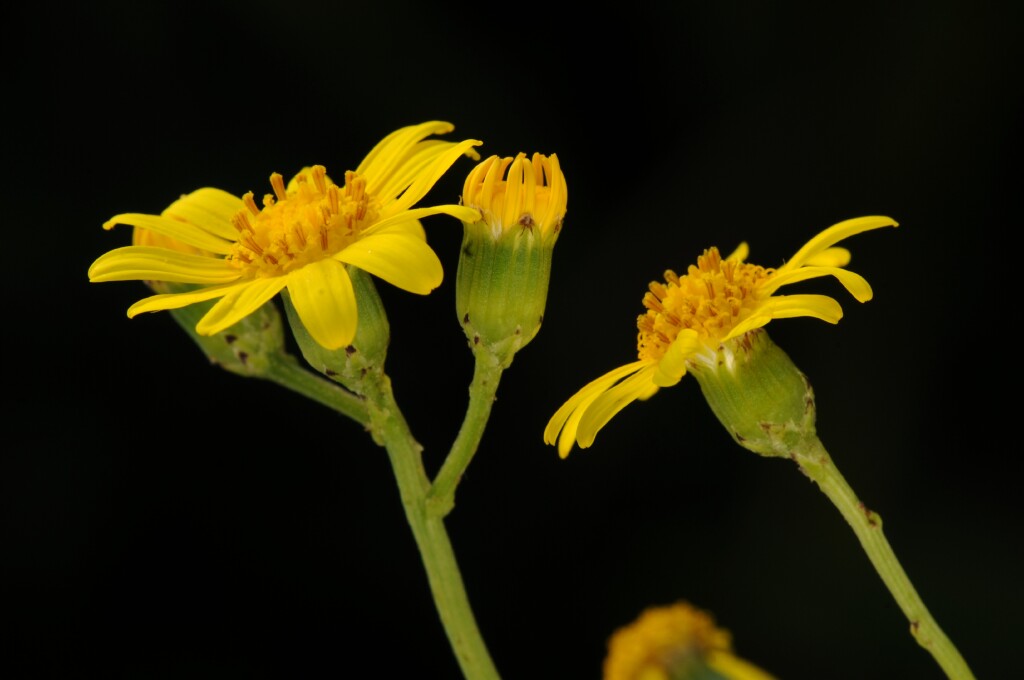Senecio pinnatifolius
A.Rich. Variable GroundselErect, sprawling or prostrate, sometimes rhizomatous, largely glabrous annual or perennial to 2.0 m tall. Leaves sessile, sometimes pseudopetiolate, undivided to tri-pinnatisect, to 12 cm long, 10 cm wide, thin to fleshy, succulent on coast, often auriculate at the base; basal leaves often differing from cauline leaves. Inflorescence of 1–40 capitula; capitula radiate; peduncle sometimes somewhat hairy; involucre cup-shaped or campanulate, 3.0–7.5 mm long, bracts (10–) often predominantly 13, occasionally predominantly c. 20, with apex weakly to strongly pigmented brown, black or purple; stereome occasionally sparsely hairy, variably fleshy, sometimes succulent, sometimes delimited by a purple line towards the apex in inner bracts that have their margins overlapped by other outer bracts; bracteoles 6–16, with margin glabrous or variously hairy. Ray florets 8–13, yellow, ligules 6–20 mm long; disc florets c. 30–80, yellow. Cypselas cylindric (1.6–)2.0–4.5 mm long, papillose-hairy sparse to moderately dense in lines or glabrous; hairs of cypselas of ray florets exceeding pappus-ring or not; pappus of slender hairs, 3–6 mm long, deciduous.
MuM, Wim, GleP, Brid, VVP, VRiv, MSB, RobP, GipP, OtP, WaP, Gold, CVU, GGr, DunT, NIS, EGL, EGU, WPro, HSF, HNF, OtR, Strz, MonT, HFE, VAlp.
A highly variable species, particularly with respect to leaf morphology. There are eight currently recognised varieties, five of which have been recorded in Victoria (Thompson 2005).
Walsh, N.G. (1999). Senecio. In: Walsh, N.G.; Entwisle, T.J., Flora of Victoria Vol. 4, Cornaceae to Asteraceae, pp. 941–965. Inkata Press, Melbourne.
 Spinning
SpinningThompson, I.R. (2005). Taxonomic studies of Australian Senecio (Asteraceae) 5. The S. pinnatifolius/S. lautus complex.. Muelleria 21: 23–76.




